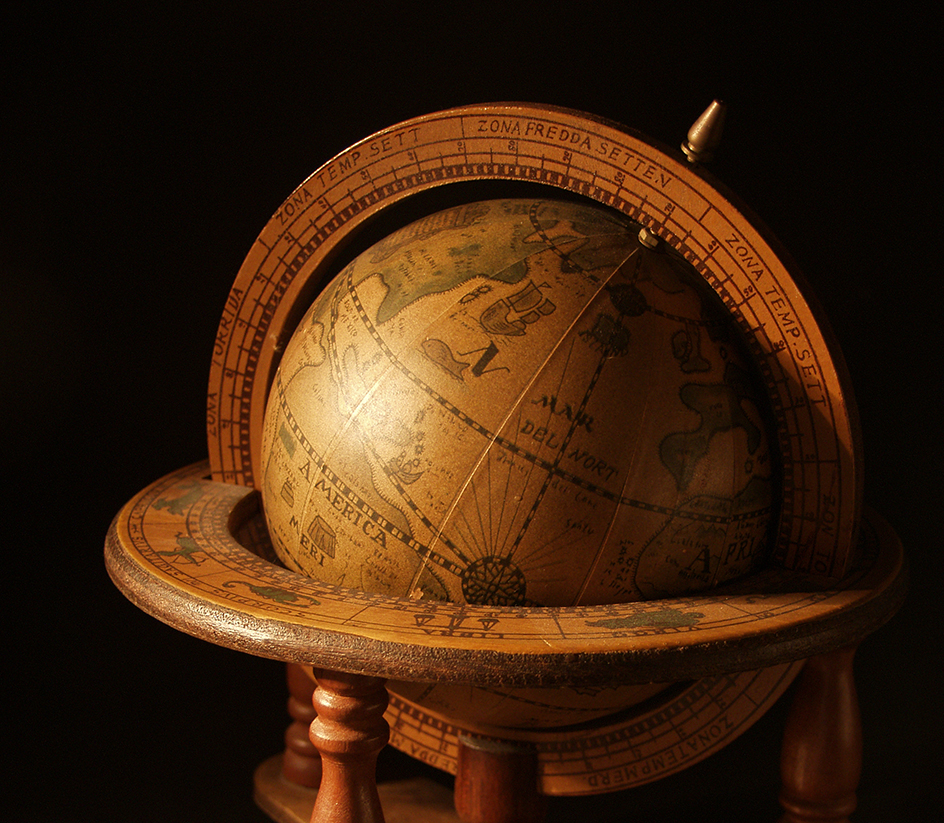Globe is a hollow sphere with a world map on it. In most cases, the map is printed on paper that is then pasted onto the sphere. The paper consists of one or more tapered strips called gores. The gores are then pasted on cardboard half-spheres, which are glued together into a globe. In other cases, the map is printed on flat pieces of plastic pulled into half-spheres and glued together.

Globes of Earth are known as terrestrial globes. They are used in the study of geography and can be found in classrooms and libraries. They are also helpful in planning air and sea routes and in establishing satellite communications. Globes of the moon and other planets have also been produced. A globe that is a map of the sky is called a celestial globe. Earth itself is often referred to as the globe.
Only a globe can give a correct picture of Earth as a whole. Because the surface of a globe is rounded like Earth’s surface, a globe represents all parts of Earth’s surface true to scale. Distances, areas, and directions can be observed without the distortion caused by projections used for flat maps. The proportions and positions of Earth’s land features and oceans in relation to each other are seen on a globe exactly as they are on Earth. The shortest distance between two points on Earth or globe is defined by what is called a great circle. Navigators make use of a great-circle route in planning ship and air lanes. A great circle can be measured directly on a globe (see Great-circle route ).
Globes may be mounted on a center axis to show how Earth rotates, or they may be placed in a cradle without attachment. With special accessories, relationships between Earth and the sun can be demonstrated on a globe. Such relationships include the length of daylight, time differences, and satellite paths.
Martin Behaim, a German geographer, made one of the first terrestrial globes in Nuremberg, Germany, in 1492. Few globes are more than 22 inches (56 centimeters) in diameter. Eartha, at the headquarters of a map company in Yarmouth, Maine, is probably the world’s largest globe. It measures more than 41 feet (12.5 meters) in diameter. Other large globes that measure up to 30 feet (9 meters) in diameter have been made for newspapers and museums.
